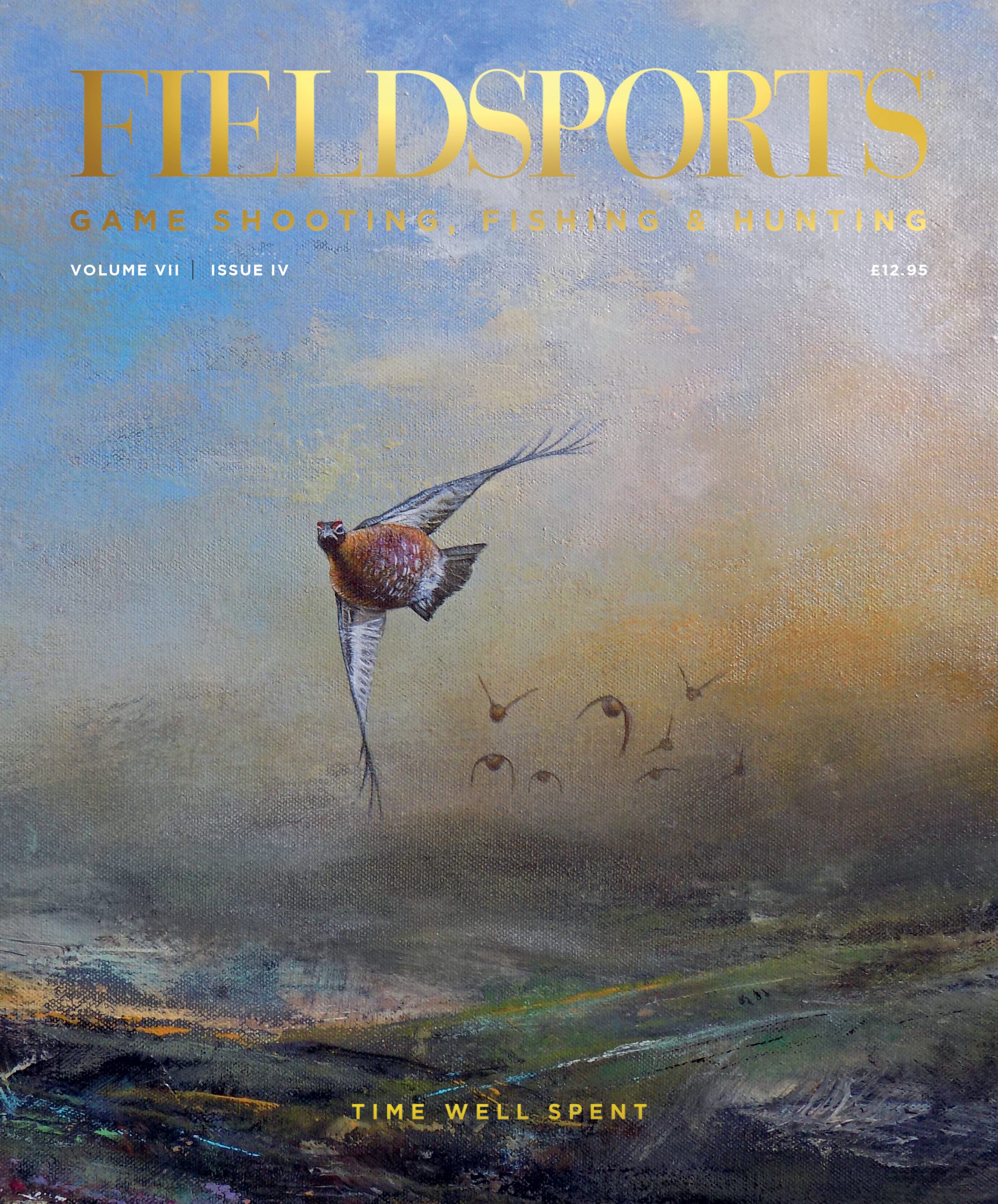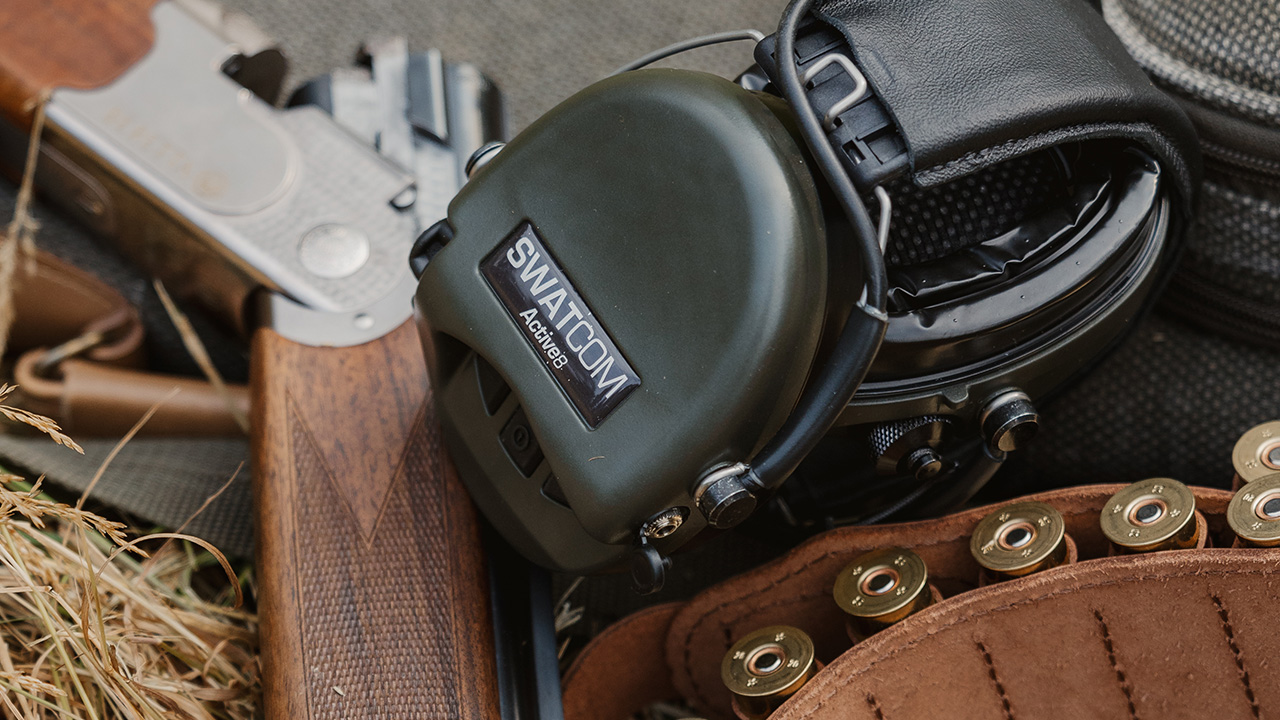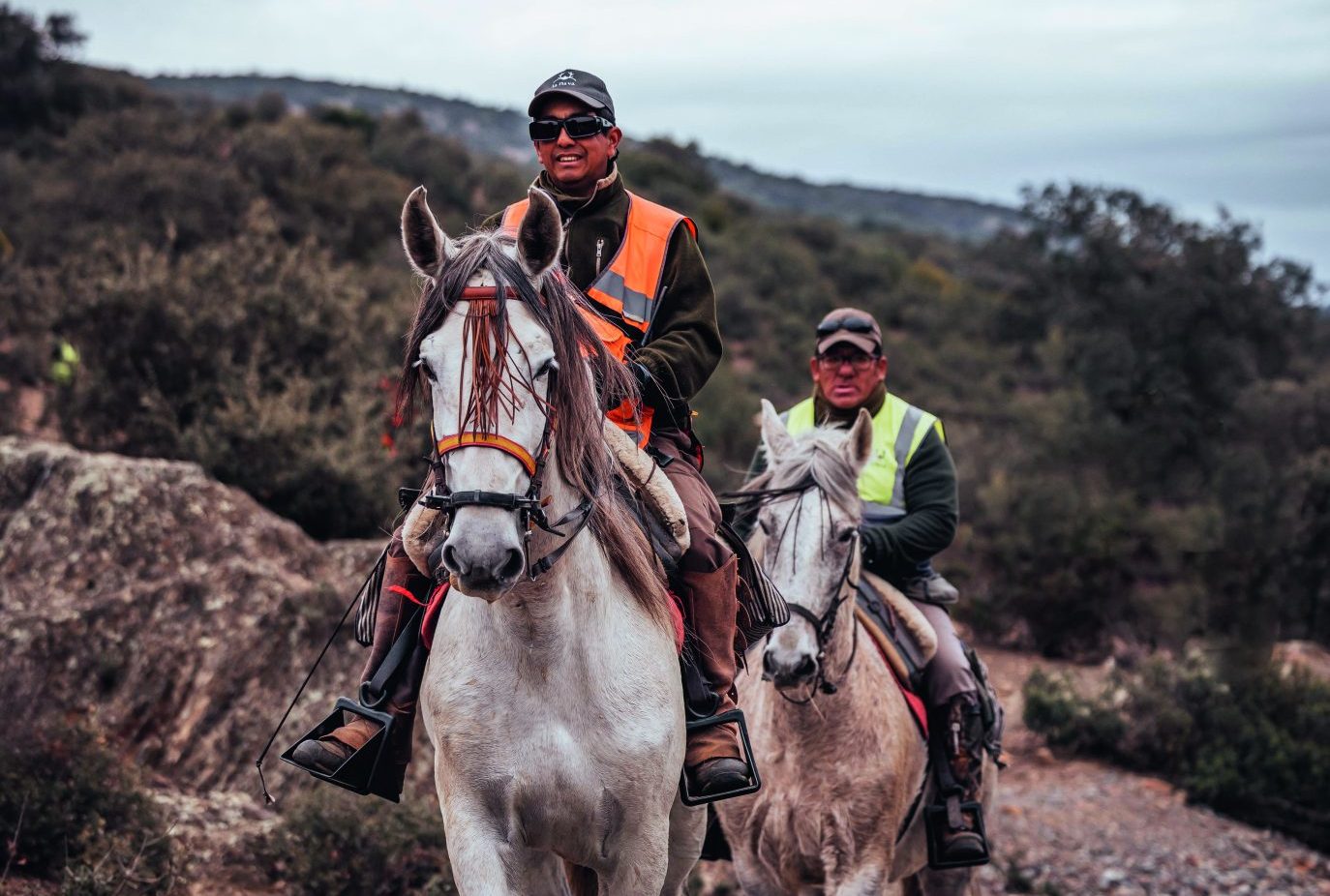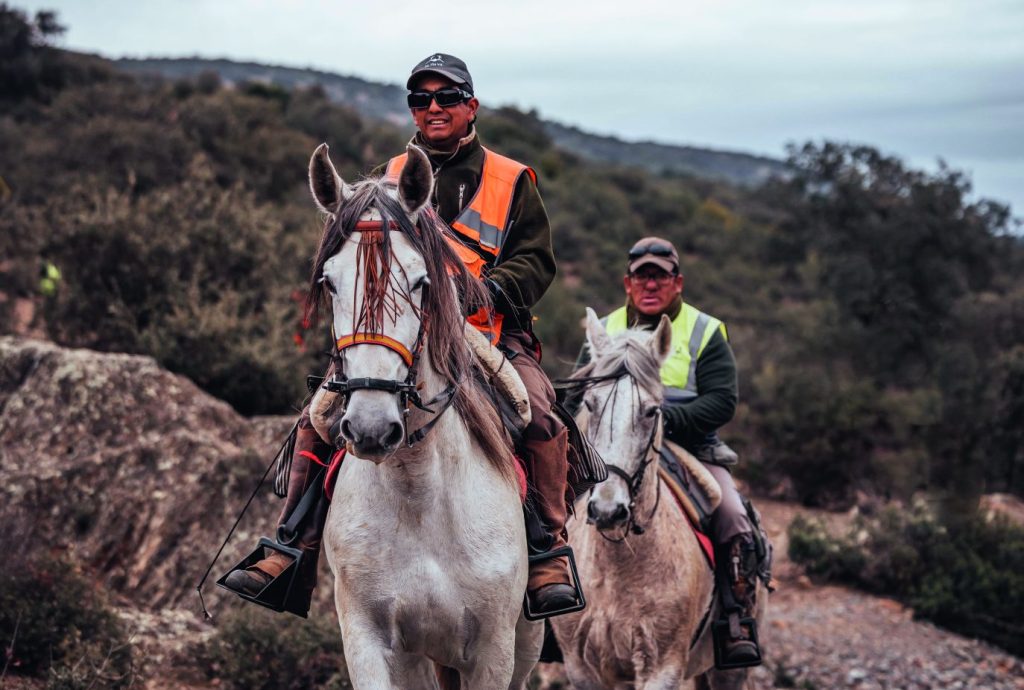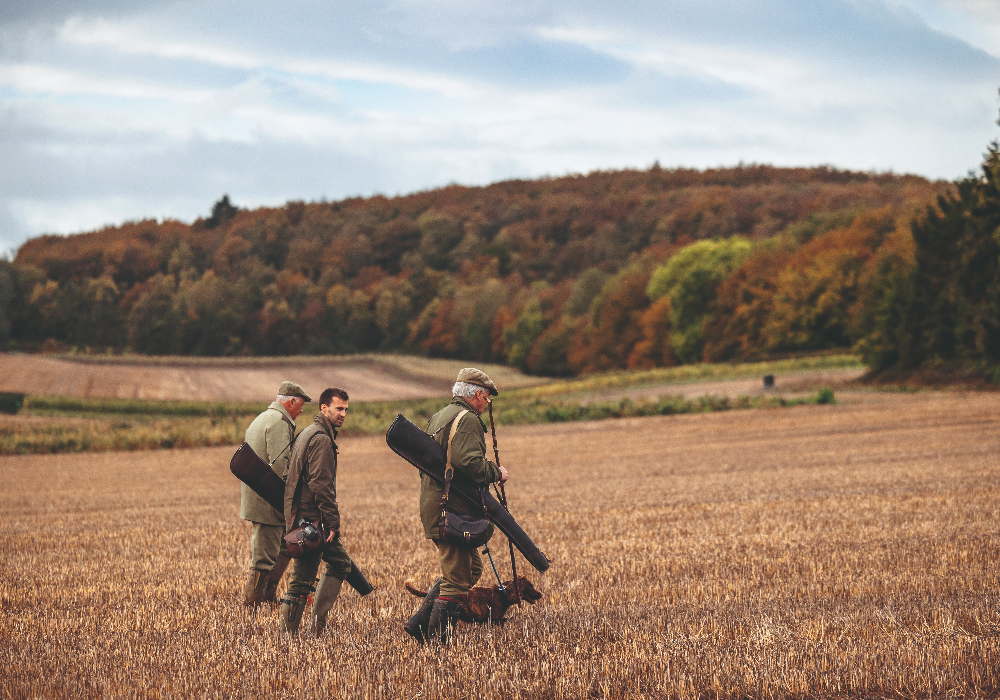Grouse Shooting Over HPRs in Lancashire
Walked-up grouse shooting on the high moors above Burnley demands sharp reactions. Low, fast birds and keen dogs combine for unforgettable sport.
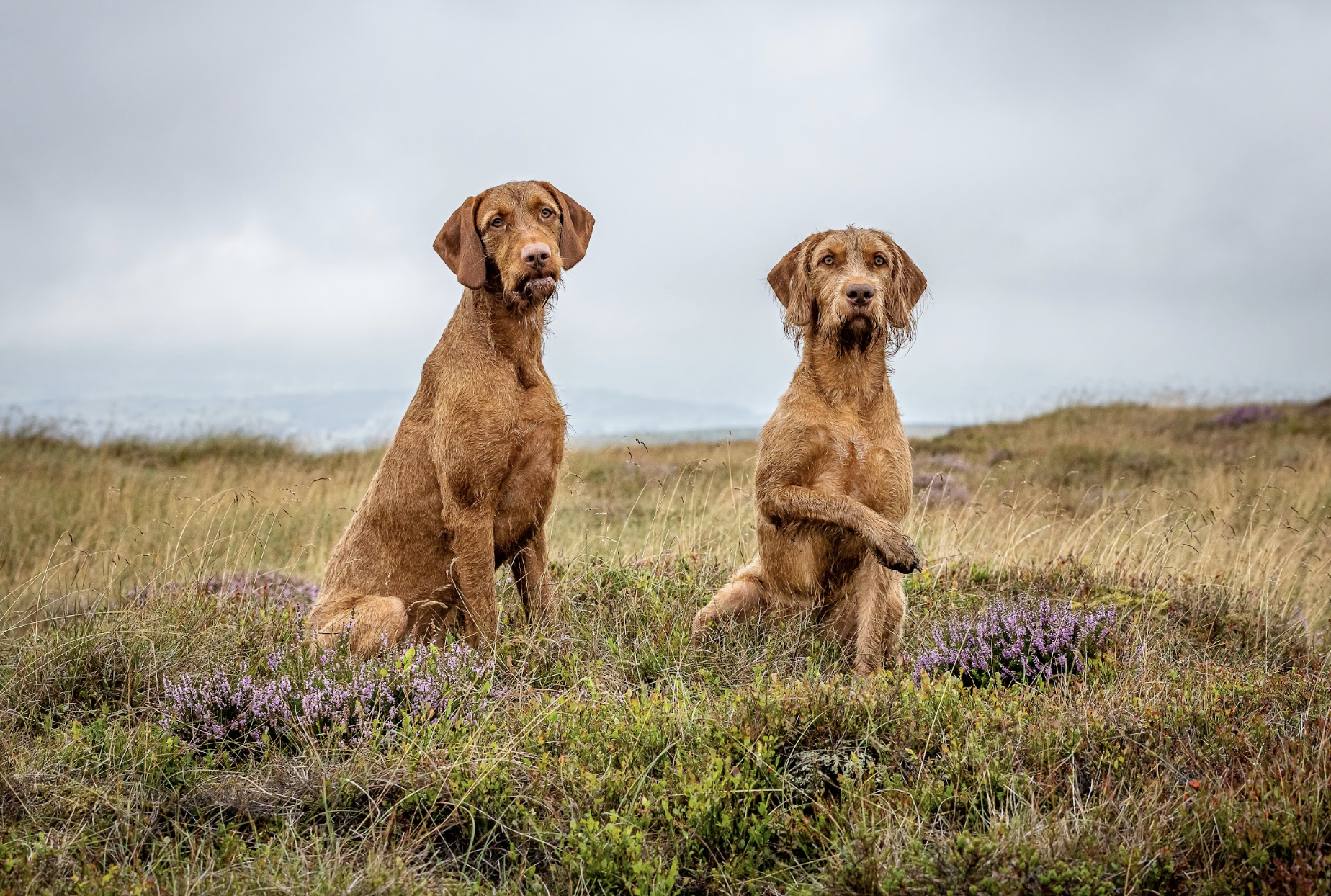
Into the Heather
It was a misty autumn morning as 10 of us climbed above the treeline. Five Guns, three handlers, a keeper and our host — forming into line with anticipation. Beechwood Fate, Shaun Walker’s Hungarian vizsla, led the way through tussocks of grass, while Burnley’s silhouette faded behind us. “Dog on point!”
Louise Holmes’ wirehaired pointer, Isla, had struck first. Guns Tom West and Jonathan Cox, on their grouse debut, moved smoothly into position. A brace lifted, shots rang out, and Louise soon completed the holy HPR trinity — hunt, point, retrieve.
The Silver Heather
Dew clung to the heather. Larks darted in and out of view. Visibility dropped under cloud. Shaun’s older vizsla held point, while his younger, Ribble Valley Blossom, stayed close. A bird flushed but the angle was wrong, and the moment passed.
I missed two further chances. We paused at a fence line — the edge of Philip Stephenson’s permission. The mist grew too thick for safe shooting, so we took a moment to admire the birds and stories so far.
Classic Guns and Sharp Shots
Jonathan’s Thomas Horsley sidelock ejector stood out — a fine side-by-side from Yorkshire’s shooting past. When the skies cleared, we pushed on.
A single grouse curled down the slope. This time, I connected. Louise’s Blossom delivered the blind retrieve perfectly, then immediately locked on point again. Richard Wright downed a going-away bird with a long, composed shot. “Speed up or you’ll miss your chance,” warned keeper Dan Fearis.
Having left East Anglia for the moors, Dan had no doubts: “This is the best sport available.”
Grouse on the Border
Reaching another fence line, I found myself with one foot in Lancashire and the other in Yorkshire — and a surprise covey of grouse beneath me. Birds erupted in every direction. Despite the shock, I reloaded and fired both barrels.
Two birds dropped. Louise and Blossom made flawless blind retrieves.
A Pause Among Wreckage
Lunch was taken near Gorple Stones, beside the site of a 1945 B24 bomber crash. Four crewmen were lost. A cairn and cross mark the spot. It brought reflection as we returned to the moor.
A Symphony of Dogs and Shooting
Walking with Philip Stephenson, I watched Eliot Grant and Richard Wright shoot over Salix, a German shorthaired pointer handled by Fleur Fillingham. Fleur, field trial secretary for the German Shorthaired Pointer Club and a GWCT scientist, showed true skill in dog work and fieldcraft.
Not all shots were going-away – grouse offered every imaginable angle. “Conservation bodies should collaborate more with our keepers,” said Philip. “The benefits would be immense.”
Ted Hughes and the Moors
Cloud shadows moved across the hills. I recalled Poet Laureate Ted Hughes: “Moors are a stage for the performance of heaven. Any audience is incidental.”
Hughes once said picking up a gun restored all his senses. I felt something similar – not from the gun, but from watching the dogs.
Their focus, movement and instinct transformed the landscape before us. It was captivating.
Bonds Beyond Science
At day’s end, we divided the bag and headed home. On the radio: news of Professor Takefumi’s study showing dogs cry tears of joy when reunited with their owners.
I didn’t need proof. A day over HPRs was proof enough.
Related Articles
Get the latest news delivered direct to your door
Subscribe to Fieldsports Journal
Elevate your experience in the field with a subscription to Fieldsports Journal, the premium publication for passionate country sports enthusiasts. This bi-monthly journal delivers unparalleled coverage of game shooting, fishing and big game across the UK and beyond.
Each issue offers a stunning collection of in-depth features, expert opinions and world-class photography, all presented in a timeless yet contemporary design.
Save 10% on shop price when you subscribe, with a choice of packages that work for you. Choose from Print & Digital or Digital only with each journal delivered directly to your door or via the app every other month, plus access to past issues with the digital back issue library.
